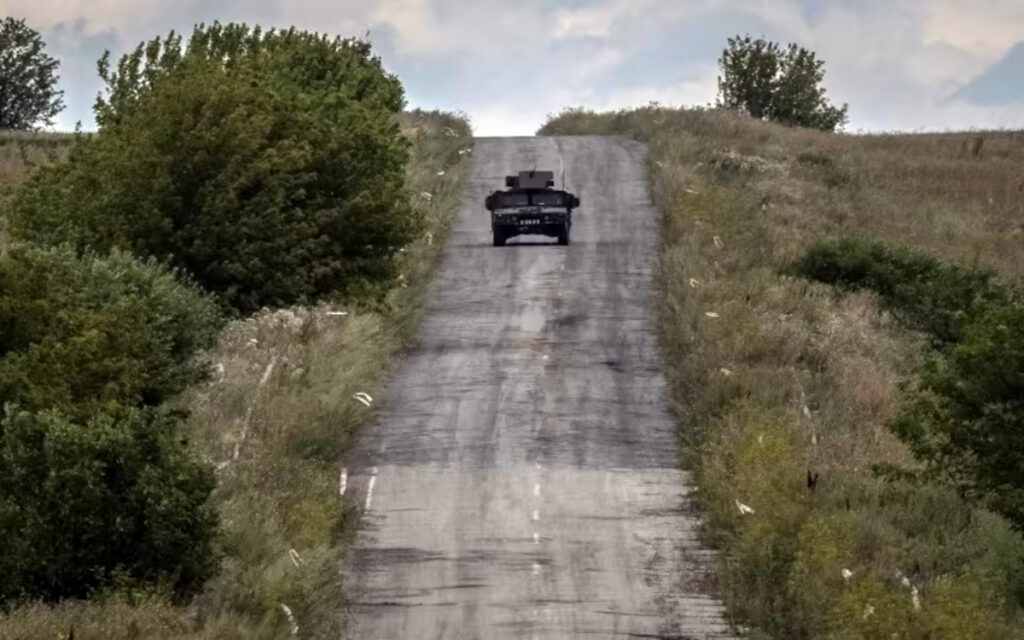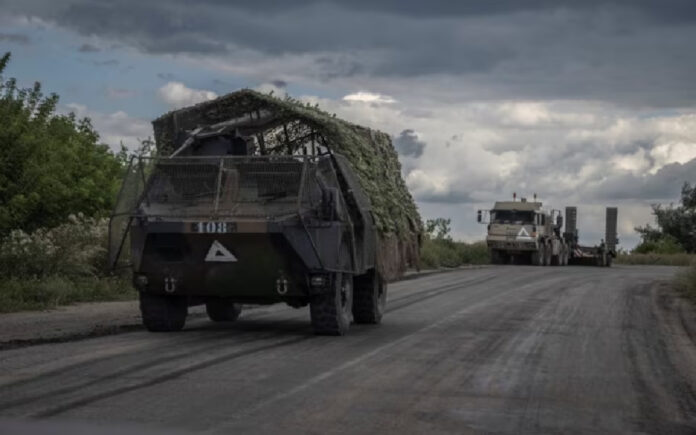Moscow: On Monday, Russia began evacuating civilians from parts of a second border region as Kyiv ramped up military operations near the frontier, following its largest incursion into Russian territory since the war’s onset in 2022.
Last Tuesday, Ukrainian forces breached the Russian border and advanced into Western areas of the Kursk region, a surprise offensive likely aimed at gaining leverage in potential ceasefire negotiations after the U.S. election in November.
Caught off guard, Russian forces managed to stabilize the front in Kursk by Sunday. However, Ukraine retained control over a portion of Russian territory, with ongoing skirmishes reported by Russian war bloggers. In the adjacent Belgorod region, Governor Vyacheslav Gladkov announced evacuations from the Krasnaya Yaruga District due to heightened “enemy activity on the border.”
“I am sure that our servicemen will do everything to cope with the threat that has arisen,” Gladkov stated. “We are starting to move people who live in the Krasnaya Yaruga district to safer places.”

Russia has heightened security measures in the Kursk, Bryansk, and Belgorod regions. Belarus, Russia’s ally, has also increased its troop presence along its border, following reports of Ukrainian drones violating its airspace.
Russian officials claim that Ukraine’s attacks on Russian territory are designed to demonstrate to its Western backers that Kyiv remains capable of significant military operations, possibly to gain a bargaining advantage ahead of potential ceasefire talks.
Since its invasion of Ukraine in February 2022, Russia has controlled 18% of Ukrainian territory. Despite Russian numerical superiority, advances have been limited this year following Ukraine’s unsuccessful counteroffensive in 2023.
President Volodymyr Zelenskiy addressed the situation on Saturday, asserting that Ukraine’s incursion into Russian territory was aimed at “restoring justice” and applying pressure on Moscow’s forces.

Also Read | Russia Enhances Air Force with New Su-30SM2 Fighter Jets
Conflict Landscape
The Ukrainian attack has spurred discussions in Moscow about how Ukraine managed to breach the Kursk region after more than two years of intense conflict. Russian war bloggers noted Ukrainian efforts to encircle Sudzha, a key gas transit point, and reported significant battles near Korenevo, about 22 km (14 miles) from the border, and Martynovka.
“The situation on the borders of the western Belgorod region is alarming,” said Yuri Podolyaka, a prominent pro-Russian military blogger, noting that Ukraine was probing the border at multiple points with “three fairly large groupings.”
Following the August 6 incursion, the Russian rouble depreciated by 6% against the U.S. dollar. Gazprom announced it would send 39.6 million cubic meters of gas to Europe via Ukraine on Monday.
Also Read | Ukraine Reports No Evidence of Belarusian Military Buildup Near Border
While the United States claimed it was unaware of the Ukrainian operation before its execution, Moscow signaled a potential strong response. “We have no doubt that the organisers and perpetrators of these crimes, including their foreign curators, will bear responsibility for them,” stated Maria Zakharova, spokesperson for the Russian Foreign Ministry. “A tough response from the Russian Armed Forces will not take long.”
In other developments, a major fire broke out at the Zaporizhzhia nuclear power plant, which is under Russian control.



